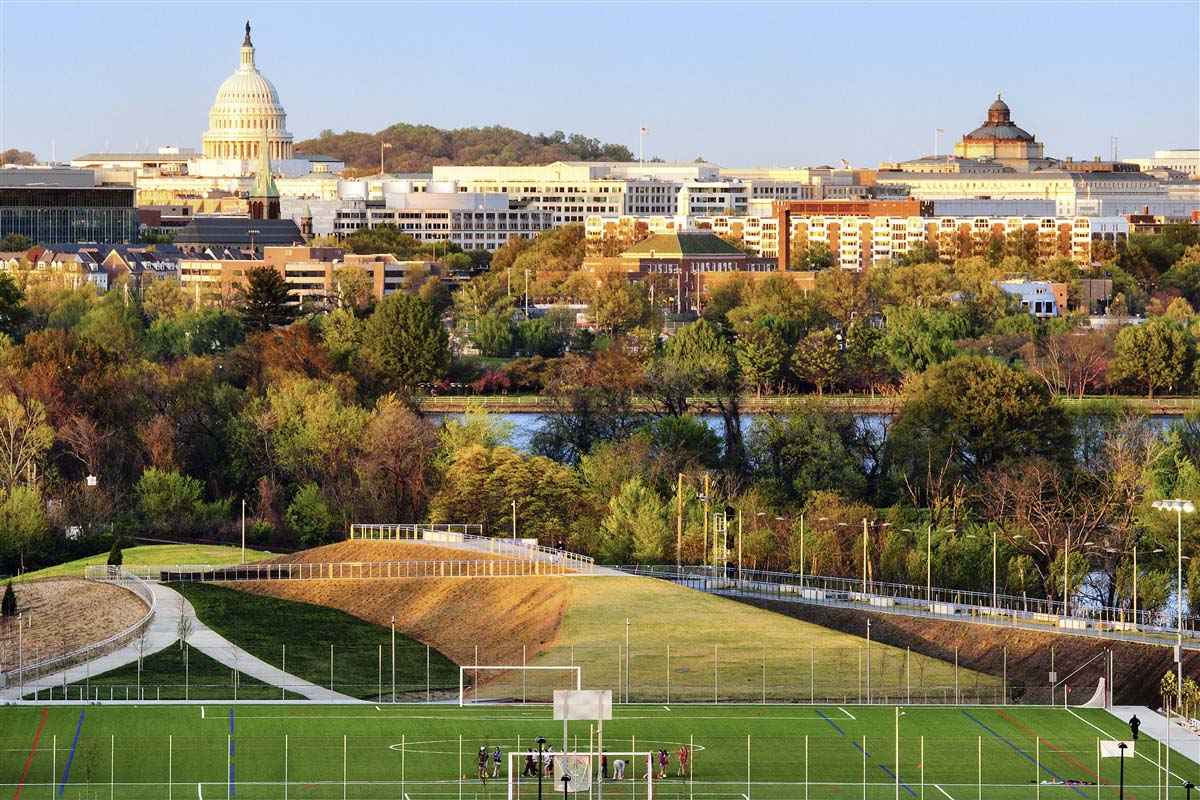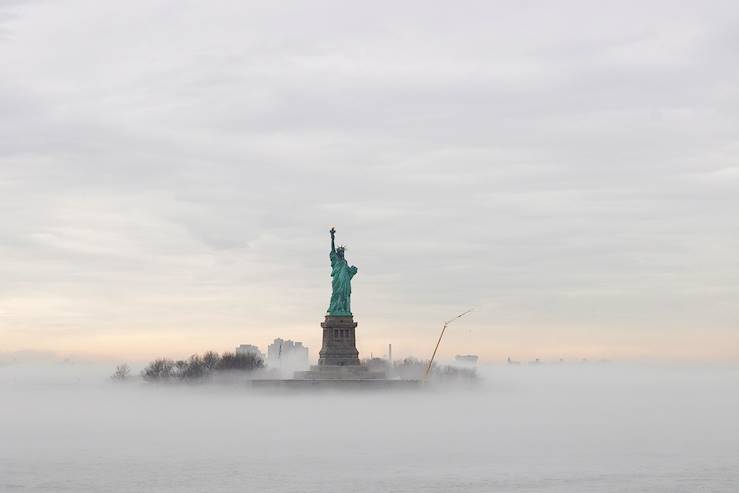January
February
March
April
May
June
July
August
September
October
November
December
Overall, with the exception of some regions that experiences extreme conditions, parts of the East, Florida and Louisiana, the United States is very pleasant from April until September. Temperatures average above 20°C in the summer, and may well exceed 10°C on average in autumn, particularly in September and October. A closer look at the climate in the United States.
New York
New York City, on the East Coast, is a perennially popular destination. The so-called 'city that never sleeps' is located on the Northeastern Atlantic coast. As a result, New York's temperate and humid climate experiences warmer summers and milder winters. The average temperature exceeds 24°C in July and August, and summers can sometimes be unpleasantly hot. The heat can then be difficult to bear on the streets of the Big Apple. When is the best time to travel? The best time to travel is between April and June, or after summer, so September and October. In winter, New York can experience very low average temperatures, sometimes even dropping below zero, especially in January. Despite the magical atmosphere and picture postcard images of a white Christmas in New York, remember that sometimes the temperature can drop to as low as -20°C.Florida
Florida is one of the Southern states of America, with a Caribbean climate in the south and a wet subtropical climate across the rest of the state. Florida's climate helps the state attract millions of tourists, but be aware that there can be heavy (though usually brief) rainfall in August, as well as the risk of hurricanes in September, making landfall on the southern tip. As a result, relying on average temperatures is not necessarily recommended. Temperatures are always above 20°C, even in winter, but be warned that they can reach an average of greater than 29°C during the summer months and there is also a risk of hurricanes. Miami and the cities further north are very pleasant in summer (warm and humid), while the winters are quite cool, without dipping below zero.Louisiana
Warm and humid in summer, the climate in Louisiana is mild and dry in winter, Ideal conditions for a beautiful summer, and a cool but comfortable winter? Is Louisiana arguably the perfect year-round destination? Be careful during the summer months and early autumn, which are traditionally the region's cyclone season. Because of Louisiana's proximity to the Gulf of Mexico, rainfall and severe weather is common, much like in the southern tip of Florida. We recommend visiting before summer (March to June) or during the cooler months of October and November.Hawaii
Hawaii. The name alone conjures up an image of sun, coconut trees and crystal clear waters. And it wouldn't be far from the truth, as Hawaii enjoys a particularly pleasant climate, and is an ideal destination for year-round sun. In general, the sun is always shining, yet the temperatures remain very comfortable. Throughout the year, temperatures average over 20°C, with - unsurprisingly - slightly higher temperatures from June to September. A maximum temperature of 30°C is common, even in November. So, is Hawaii a place where the climate is always warm and pleasant? An island idyll? Certainly, but for those in search of cooler climes, be aware that the different islands have different windchill factor. Better yet, on Big Island (the main island, officially Hawaii), there are mountainous areas ideal for hiking and even skiing.Alaska
Located in the far north, Alaska has an Arctic climate. Winter is long and cold and the ground is frozen. The climate in Alaska varies according to three main criteria: latitude (north, south), altitude (the terrain is particularly mountainous in Alaska) and distance from the ocean. So in general, in the north, at higher altitude and far from the ocean, the climate is at its coldest. Average temperatures can dip to -27°C in January or February in the north, and just over 3°C in the short summer from July until August. On land, the sub-polar climate means cold winters (-23 °C on average in January) but a summer period during which temperatures exceed 15°C on average (maximum possible temperatures of 22-23°C). Rainfall, however, is significant. Finally, southern Alaska experiences less variation in its weather. The average temperature does not fall below -10°C in winter, and in summer, temperatures do not exceed 15°C on average. This is the area that benefits most from oceanic influence, and therefore there isn't as much climate fluctuation.Western United States
The climate in the western part of the United States is complex. Mountainous barriers play a key role and limit the effects of an oceanic climate. This type of climate is found along the northern coastline. Washington State has a very humid oceanic climate. In the American Southwest, the climate becomes almost Mediterranean and semi-arid. California is the only area in the United States that benefits from this Mediterranean climate, halfway between Mexico's tropical climate and the oceanic climate of the northwestern coast. The inland climate can be described in one word: arid. The Rocky Mountains and Pacific Ranges block the chance of rain, creating desert areas. California's most arid area, Death Valley, is the hottest place in the United States. Here, the summer can be unbearable (average temperature of over 30°C, with the mercury sometimes reaching 40°C). And yet this doesn't stop some cities, such as Las Vegas, from welcoming hordes of tourists. To sum up, we recommended that you choose the summer for a visit to the coast (Los Angeles, San Francisco) and wait until September and October for a trip inland. The best time to visit the Rocky Mountains or the Great Plains (Kansas, Texas, Nebraska and North Dakota) is between April and October.For a trip to Arizona or Las Vegas, avoid the peak temperatures and heat waves that occur in the summer and opt for a milder period: April and May, or September and October.




























